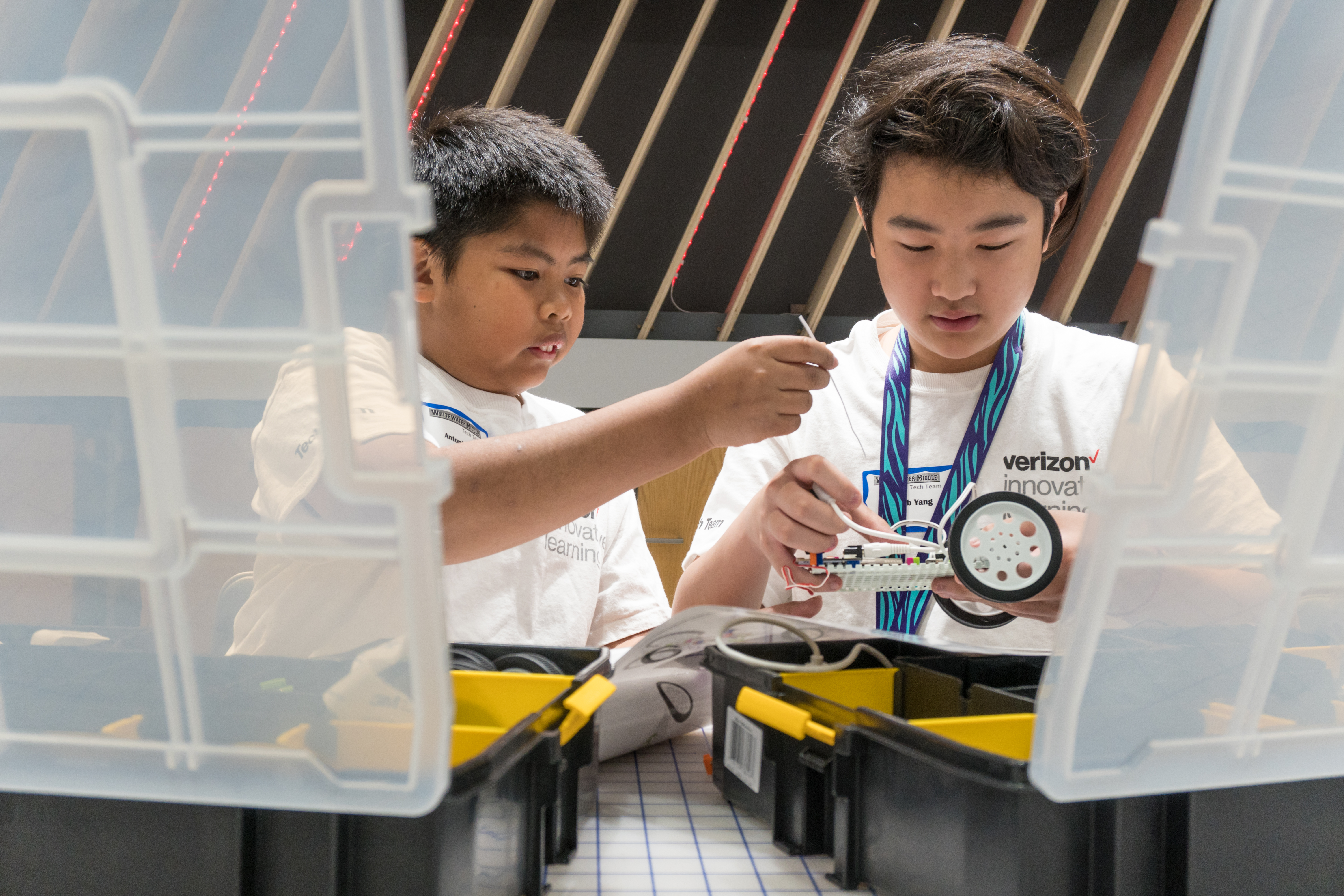A new innovative learning lab opened Oct. 3 at Whitewater Middle. A result of Verizon’s vision and partnership, it offers students a bright, modern 3,000-square-foot area where they can collaborate, create, communicate, think critically and solve problems — all necessary skills in today’s learning environment.

Whitewater is one of six schools in CMS that have been part of Verizon Innovative Learning since 2016. Now, it is one of the first two middle schools in the country to have an innovative learning lab. The project started 18 months ago with the Verizon Foundation’s education program team. The team visited labs and makerspaces at leading universities such as Harvard, Massachusetts Institute of Technology, New York University and the University of Virginia to ensure that the new lab would be of the highest caliber.
“Research has shown that maker-centered learning helps students develop ingenuity and flexibility, as well as self-confidence and a sense of community,” said Principal Beth Thompson. “Let’s take virtual reality as an example. We don’t know everything that can be done with that technology yet, but we can teach it and let our students’ minds take us to where it can go. That is the power of having this space. We can have ‘what if’ moments every day.”
The lab’s focus is on science, technology, engineering and mathematics (STEM) — a perfect match for Whitewater, which is an environmental STEM-themed school. The lab features such technology as augmented reality and virtual reality (AR/VR), coding and circuits, 3D design and sound production. There is also write-on wall paint throughout the space, interactive monitors and two adjoining classrooms.
“I love this lab. I’m an artsy type of guy so the 3D printer is cool,” said Jeffrey Hairston Jr., a seventh-grader. “It’s hands-on, so it won’t get boring either.”
Seventh-grader Sumayyah Muhammad-Bouaoud and eighth-grader Marco Castillo agree that the virtual reality is one of the biggest hits among students.
“When I’m using the AR/VR I don’t have to design things on paper. I’m drawing, building and moving my creations in real time to see how they work,” said Sumayyah.

Eighth-graders Jakob Yang and Antonio Nie sat at a table with a case full of circuits and other materials that could be used for making games, robots, alarms and sensors. They were building and programming a car. Nearby, another set of students were making an alarm.
“There was a time when we were one of the lowest-growth schools in the district and many thought we couldn’t improve. In the last four years, we have exceeded growth, proving our students are capable,” said Thompson. “This lab is another resource that gives them an opportunity to explore and experience the endless possibilities that technology provides in and outside of the classroom.”
